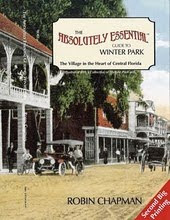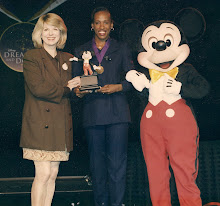 On a recent perusal of the Tower of London Web site, I was pleased to recognize the gentleman on the left in his photo. We shared a pint one night at the Yeoman Warders Club at the Tower of London.© Historic Royal Palaces
On a recent perusal of the Tower of London Web site, I was pleased to recognize the gentleman on the left in his photo. We shared a pint one night at the Yeoman Warders Club at the Tower of London.© Historic Royal PalacesI was in London on assignment and one way or another I had found myself in communication with Tom, who at that time held the interesting title of Yeoman Gaoler and Chief Yeoman Warder of the Tower of London. He asked me on the telephone if I would like to see the Tower at night, and, not knowing that visiting the Tower at night was anything unusual I said, "Of course." He said I could see the Ceremony of the Keys--whatever the heck that was--and I said that would be just dandy.
We agreed to meet at the Tower Gate on Tower Road at 6:00 p.m. It was a cool night and I put on my stoplight-red Mackintosh, raised the collar against the chill, and belted the coat tightly around me.
Out in front of my hotel sat a traditional London cab. Roundish, black and very comfortable, they are. I hopped in.
"Tower of London," said I.
The cabbie started to roll and as we headed out into the early evening London traffic he looked back at me in his rear view mirror.
"You did say Tower of London, miss?" He asked.
"Yes, I did."
"Well, you know it is closed this time of night, I'm guessing."
"I do," said I. "But I'm going to see the Yeoman Gaoler."
There was a pause.
"He's not locking me up or anything."
"Now, that's a relief."
"Its for something called the Ceremony of the Keys."
"Ah yes. Never been myself, but I've 'eard of it."
The Yeoman Warders of the Tower of London are the gents you see during the daytime at the Tower wearing what is colloquially known as the Beefeater uniform. They are the guides to the Tower, and Tom, the man who had arranged my evening entrance to the millennium-old landmark, was the top man, the biggest Beef of all the Beefeaters at the place. I had no idea what to expect. I'd asked him if he'd be in uniform when we met and in his dry British way he said, "No ma'am. I don't wear the tights when I'm off duty."
We reached the Tower as the last glow of the sun faded into orange and disappeared into the Thames. The Tower gate was black, and iron, and quite, quite large.
Standing in front of it was a tall, straight, trim gentleman with a neat beard and handlebar moustache. He also wore a Mackintosh, though his was khaki.
He was a retired Sgt. Major in the British Army, as are all the Yeoman Warders and in his quiet way he eyed me appreciatively. We shook hands, he welcomed me, and as we walked onto the Tower grounds in the growing dusk he spoke of the different ages of the Towers on the property, told me who was allowed to live there (he was, and had a very nice apartment, or so it looked from the exterior) and, he briefed me on other things of historical interest. I had no idea where we were going, but I tagged along. The place was made of huge stones and was appropriately creepy for the place that both Anne Boleyn and Bloody Mary--among others--had lost their heads.
Its position on the Thames River give the Tower a beautiful prospect on London and that is one of the reasons William the Conqueror in 1066 chose it as a place to built his castle. The Romans had used the same spot before him. Tonight, from Tower Hill, the twinkling lights of evening were just beginning to glow in London town. We walked in the twilight to an old door, which clanked as it opened and shut, and entered a hall, then turned into a room that looked remarkably like a pub. It had a bar for the proprietor and it held dark oak tables and chairs were scattered around the room. Comfortable and cozy and, I think--though I may not remember correctly--there was a fire in the grate.
"Come on in and join us," said Tom. "Let's have a pint or two before the Ceremony." I let him twist my arm. We sat at a long table with a group of the other Warders, also gray-haired, trim, military-looking gentlemen in tweeds. Tom introduced me around.
The place was, strictly speaking, a club, so I was unable to pay for my drinks. I saw no money change hands. A great deal of Guinness and other such potables were consumed as the evening wore on and the group grew mellow. They told me author Tom Clancy was a regular at the Club when he was in London. Clancy, they said, loved all things military, especially military history and they had made him an honorary Warder.
At about 9:45 Tom suggested we head outside. A group of us huddled together near what is known as the Byward Tower, and Tom excused himself. At exactly seven minutes to 10 o'clock I saw him emerge from underneath the Byward Tower carrying a lantern and something large in his other hand.
He walked down the cobblestone byway, known as Water Lane, to Traitors' Gate where an escort of soldiers from one of the Queen's regiments awaited him. He handed one of the soldiers his lantern and they walked on to the outer gate of the Tower. As they walked, soldiers stationed along the route saluted the Chief Yeoman Warder.

That's my friend Tom with the Queen's keys. When I saw the ceremony, he was in mufti. © Historic Royal Palaces
The large iron object in his hand was a large spindle of keys, one of which he used to lock the front gate of the Tower. He then walked back along his route with his escort and locked several other gates and, as he approached Traitors' Gate at the Bloody Tower archway, a someone stepped from the shadows. Fortunately it wasn't a Tower victim with her 'ead tucked underneath her arm. It was a sentry.
"Who comes there?"
And the answer came back from the Chief Warder:
"Her keys."
"Whose keys?" Asked the sentry.
"Queen Elizabeth's keys," answered the Warder.
"Pass Queen Elizabeth's Keys," said the sentry in an exchange that has been going on for seven centuries. "All's well."
One final bit took place as Tom walked to the foot of the steps of the Bloody Tower and stopped while the official guards presented arms. He then stepped forward and called out: "God preserve Queen Elizabeth."
"Amen," said the guards as the clock struck ten o'clock. Then, as I recall, my new friend Tom went away to stash his keys in a place where he could find them again the next evening.
Later the Chief Yeoman Warder told me that it was the Duke of Wellington, as constable of the Tower, who set the time for the ceremony because he wanted to ensure that all the guardsmen were safely on the grounds by 10:00 p.m. It seems even in 1819, the British soldier was a man who loved his pint and was wont to forget the hour of the night as he lifted his elbow in the nearest pub.
Following this chilly ceremony, we all returned to the cozy club to lift our own elbows in honor of guards and kings and queens gone by.
We were doing so in a very, very old structure. The original fortress at the Tower was built by William the Conqueror after his conquest of England in 1066. The ceremony itself has been conducted nightly for seven hundred years and the Warders say it is the oldest continuing military ceremony in the world. It was a delight to see it and share the fellowship of the hardworking men who guide the crowds and guard the grounds this historic treasure.
At the end of the evening in the Tower's Club, the gentlemen passed a basket of matchbooks that contained the logo of the Yeoman Warders Club, H.M. Tower of London, and asked each guest to take a few and to toss in a contribution "toward their cost". I took a couple and, of course, have saved them--evidence that I was lucky enough to visit the Yeoman Warders Club and see this ancient ceremony one night in London.
As Tom walked me back to the gate, I thought for a second that I might be locked in, but it turns out there is a pedestrian path to the street, guarded by a sentry who nodded as we passed. Before I stepped out, Tom took something from his pocked and pinned it to my coat. It was an image in enamel of a Warder in that famous red uniform.
"Keep this pin. It means you can always come back," he said. Then, gentleman that he is, he stepped out into the London traffic to help me fetch a cab.
 Mementos of my trip to the Tower from whence I returned, head still on shoulders.
Mementos of my trip to the Tower from whence I returned, head still on shoulders.
Read more!












































